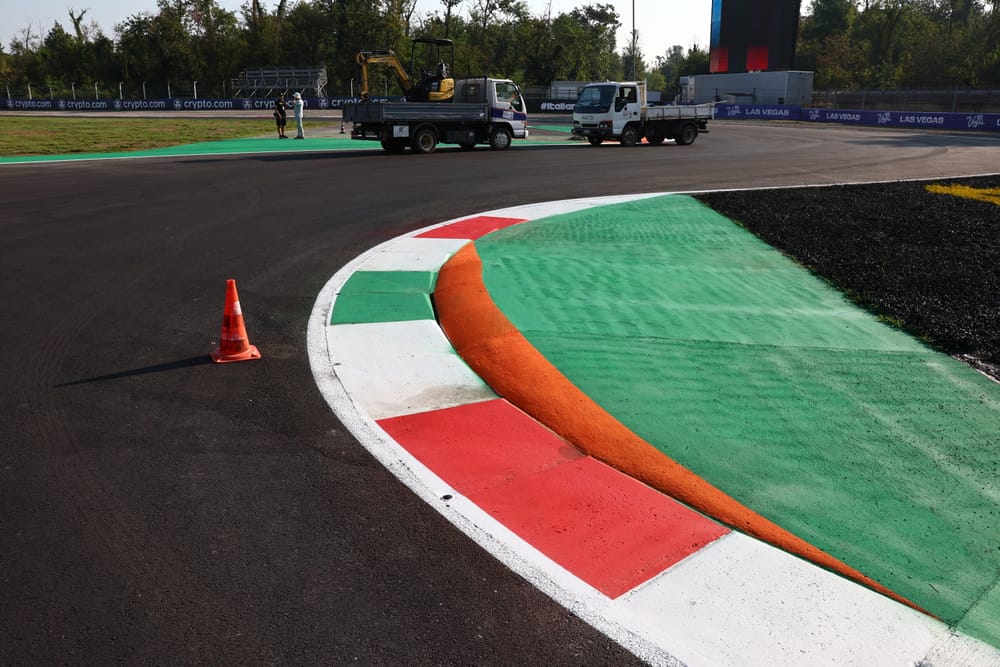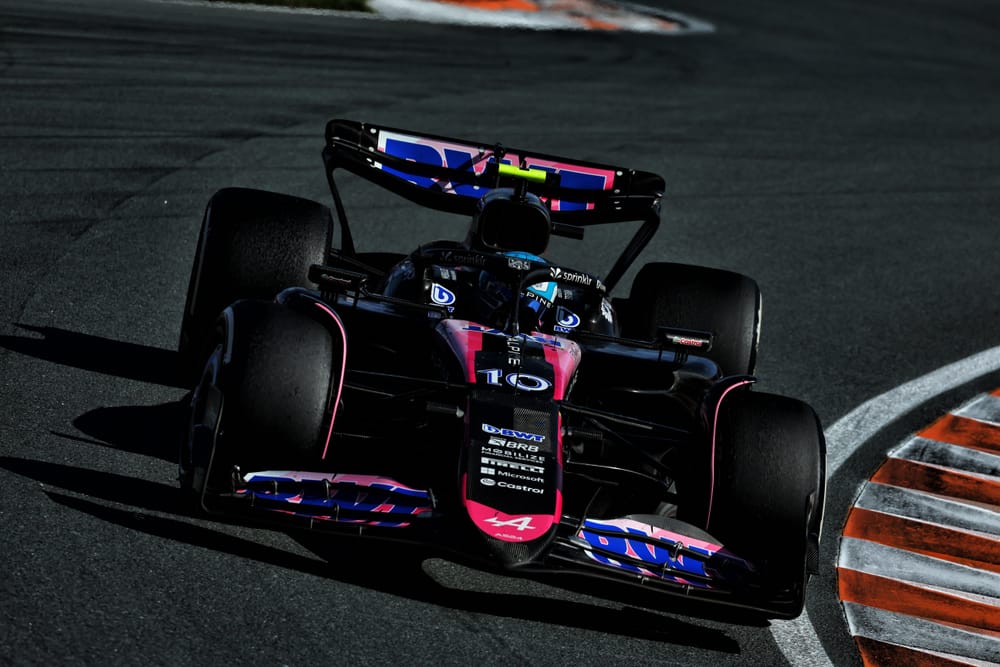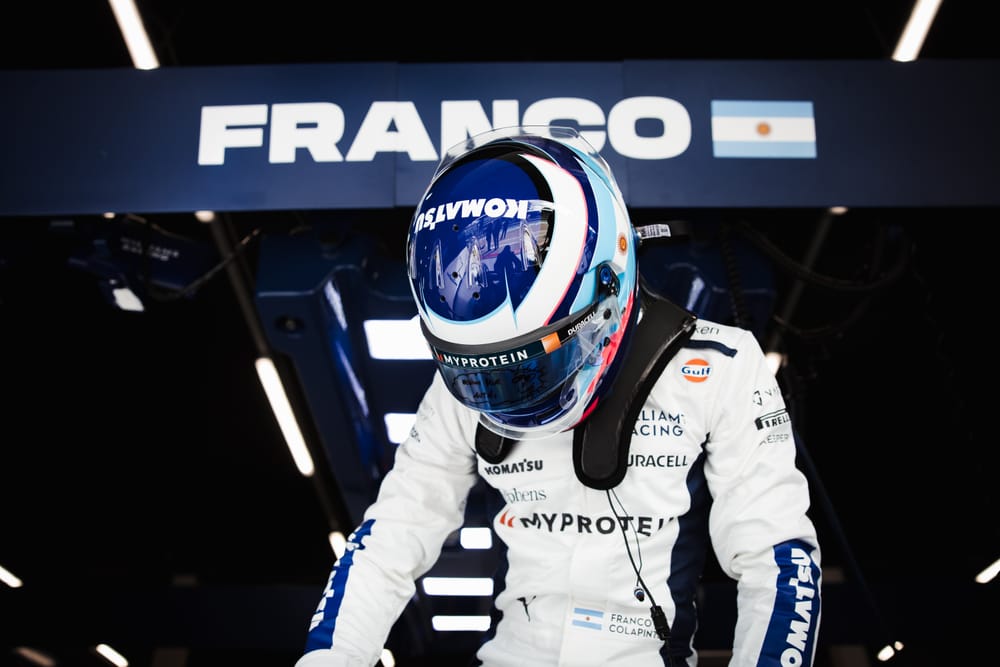Up Next

Formula 1 drivers regularly gripe about track changes, often with good reason. The complaints are typically about runoff modifications or alterations to the profile of corners, or perhaps the addition of troubling track furniture or some such, but at Monza the focus of their criticism was different.
Their concern is changes to the kerbs made as part of an upgrade of the track that also includes a complete resurfacing and the addition of narrow gravel strips in the runoffs of the first and second chicanes.
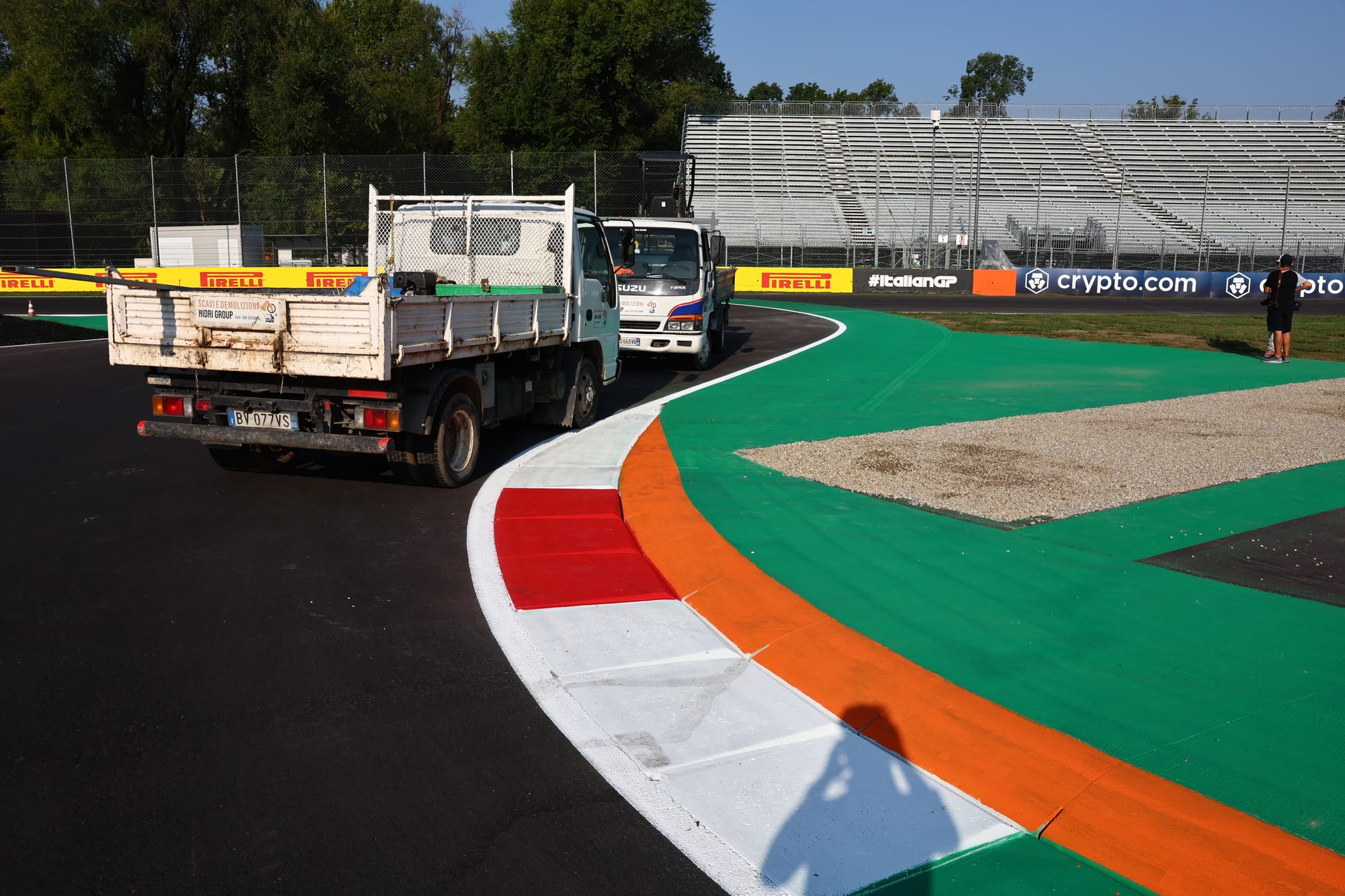
Kerbs are critical to the driving challenge and character of the corners, with significant time to be gained or lost in how they are used. The flattening of the kerbs at Rettifilio, Roggia and Ascari chicanes potentially makes those corners less of a driving challenge.
Kerbs have long been crucial to the character of Monza. While there have been times when the track was largely a flat-out, high-speed blast interrupted by occasional corners, even in the circuit's early days there were ties when chicanes – often brutal ones – were part of the challenge. The changes to the kerbs made since last year have not gone down well, with 2021 Italian Grand Prix winner Daniel Riccardo leading the objections.
“They’ve changed the kerbs,” said Ricciardo, who inspected the track by bicycle. “I went around the track this morning. I can’t say I’m that impressed because some elements have lost some of the character of the circuit.
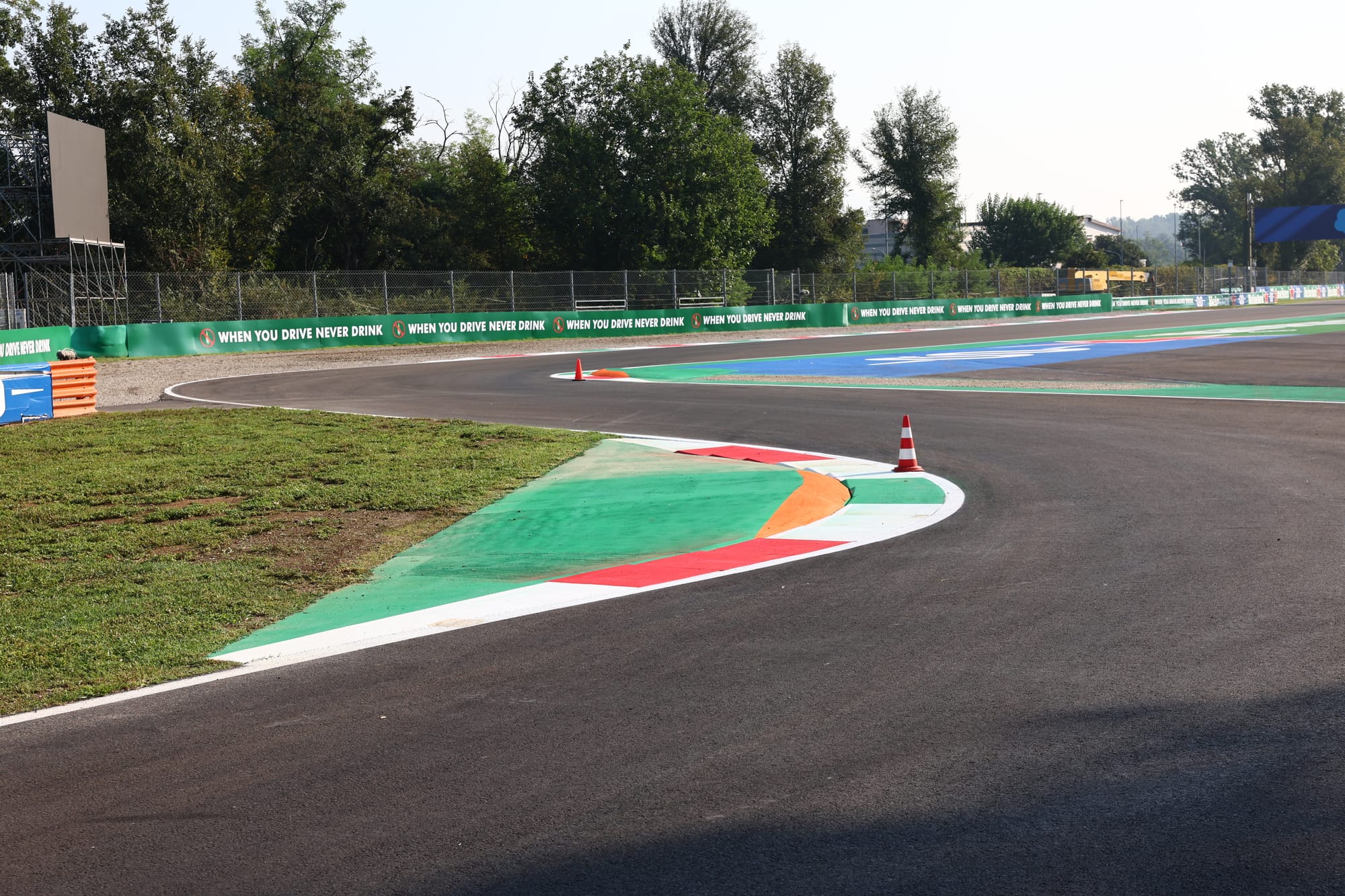
“Maybe it's just as a driver, because we drive it and experience it, but kerbs and things like this make a circuit unique. And when you put some flat kerbs - like, [at the] second chicane, for example, you get over the kerb, and then there was like a thin concrete strip, and then gravel and you'd always just try and run your wheels on that little bit of concrete, and use all the track, but not too much, and it's quite bumpy as well.
"Part of Monza is that it was old-school, and now that's gone. The resurfacing looks great, the asphalt looks really nice, but the kerbs, I'm a bit disappointed in.”
Ricciardo wasn’t the only one to argue Monza has lost something. Lewis Hamilton is reserving judgement but did say “it’s going to be a lot smoother, and probably quite a bit quicker”, which supports Ricciardo’s point that it will likely be easier to carry speed through the chicanes.
Williams driver Alex Albon also felt that Monza has potentially changed for the worse.
“It’s maybe lost a bit of its character,” said Albon. “Some of the kerbs they’ve put in are a little bit more generic. Generally, Monza had quite a specific style of track. It was quite bumpy, but that’s not a bad thing, and the kerbs were quite unique. There’s going to be a lot of exploring in FP1 and FP2 with these kerbs, if you can use them or not, and how much you can use them will be a big question mark.”
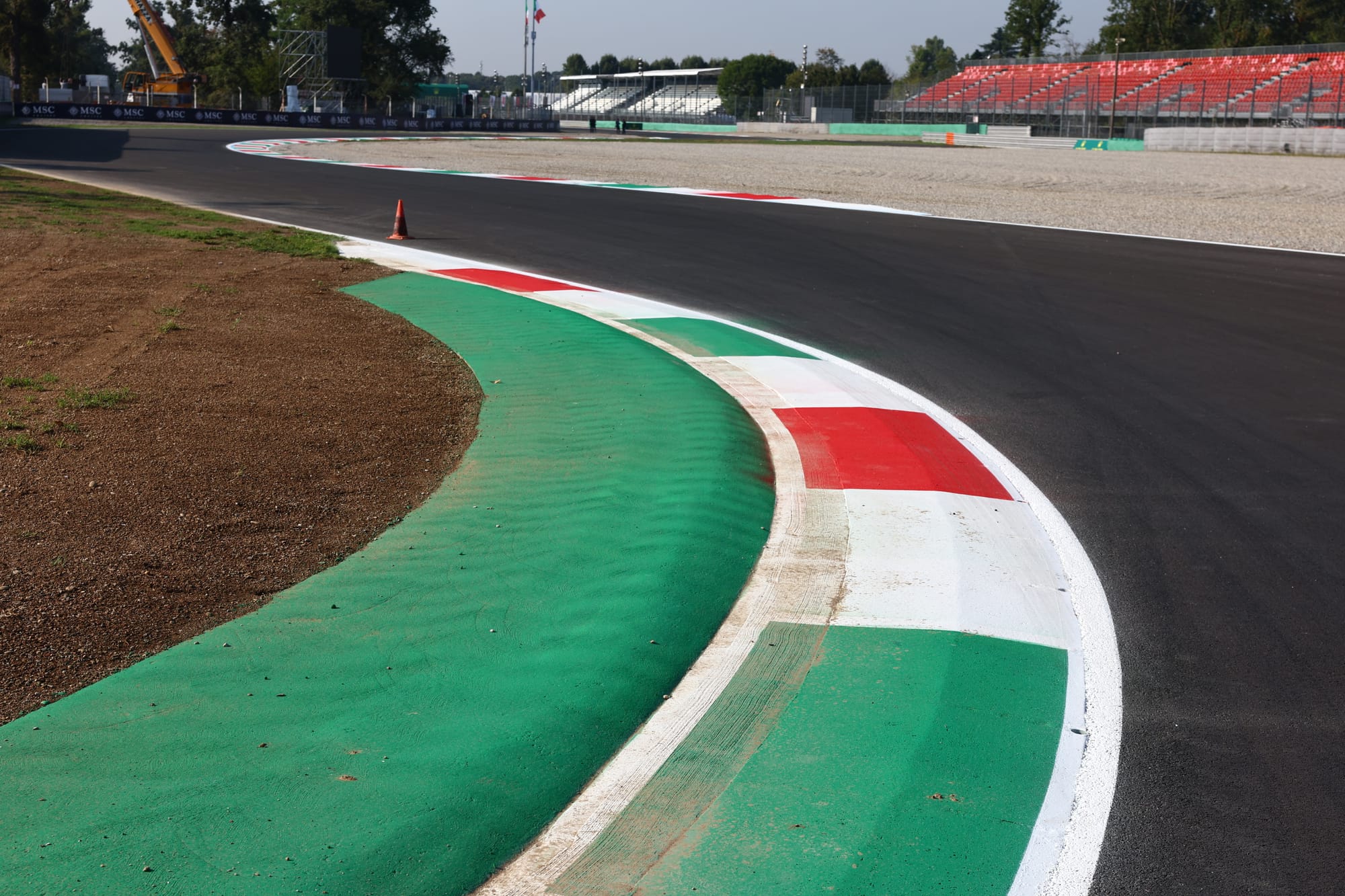
While changes at all three chicanes concern drivers, the Ascari chicane in particular was singled out by many, including Alpine’s Esteban Ocon, who said “some of the kerbs I am not a massive fan of, especially the ones in Ascari, which are quite flat”.
Ricciardo, too, complained about the changes in what’s more of a fast S than a chicane given Ferrari’s Carlos Sainz was in fifth gear at 196km/h at the slowest point of Ascari on his pole position lap last year.
“It’s very flat now,” said Ricciardo when asked about the kerb changes at Ascari.
“Ultimately, because we can use more kerb, probably it's going to be wider, easier to be flat through nine and 10.
“I don't want to be all negative. Maybe that means we can follow closer, because it's easier flat and you get a bigger slipstream. I think they still underrate kerbs and what it does to a circuit, how it changes the feeling, the character, the approach.
"We’ll see tomorrow. I’m still going to enjoy driving here, but it feels like it lost a little bit of that old-schoolness that it had. We go to a lot of modern circuits now, which are fun, but if we're going to keep the old-school ones, then let's keep them old-school. That's my concern.”
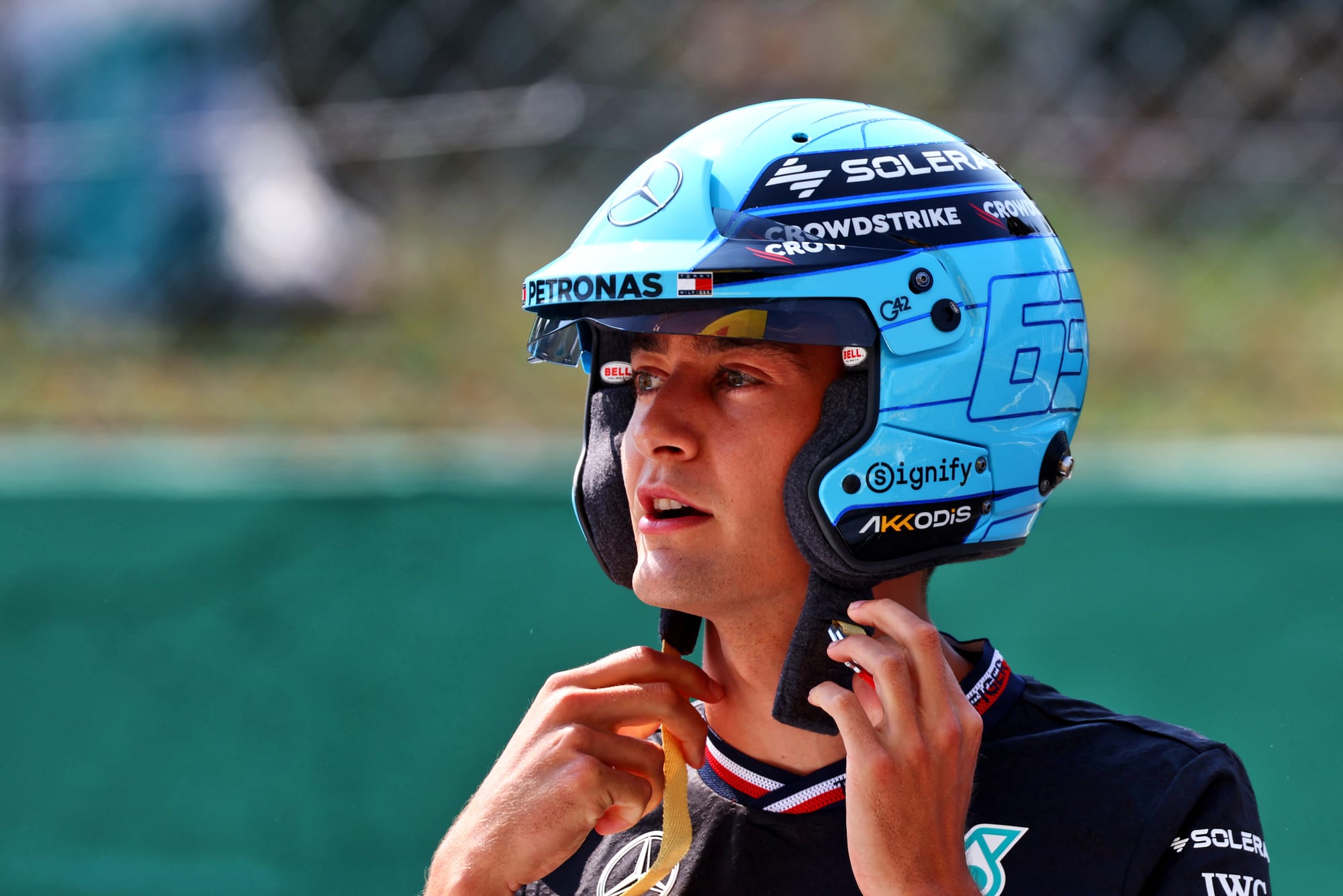
Mercedes driver George Russell also questioned the Ascari kerb changes. Like Ricciardo, he felt this will allow drivers to cut the corner more.
“The kerbs through Ascari before were very unique to Monza,” said Russell.
“[They] had a bit of a drain that dropped down about 10cm, then they came back up and you could just poke your inside wheel through these drains. It always created quite an iconic photo. You saw cars drifting through the corners with the inside wheel just dipping into this drain.
“Whereas now they're dead flat, it's going to offer the opportunity for drivers to cut the corner. We're still limited by the gravel and it's going to be a faster corner now, which is not necessarily a bad thing, but it just felt like it was one of those corners that didn't need any changing whatsoever. I don't feel strongly about it, but it's, as I say, it could have saved somebody a job [of changing the kerbs].
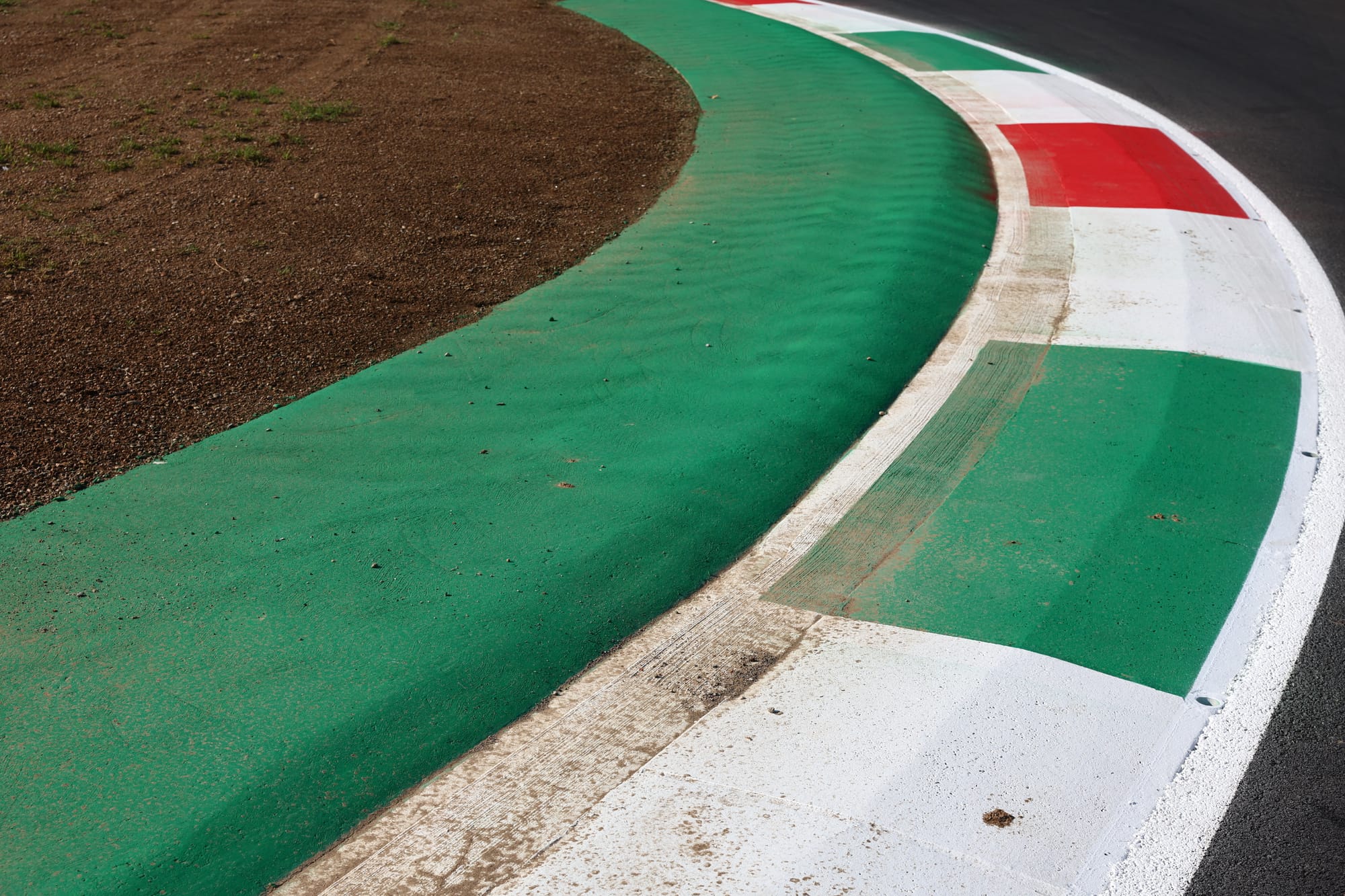
Ricciardo raised concerns about the failure to consult drivers on the changes, saying “we’re still sometimes a little bit left in the dark” and asking that circuits should “at least hear us out and let us give the in-car point of view”.
It’s important to note that track changes aren’t exclusively made with F1 in mind at Monza, which is used for a wide range of events through the year, but GPDA director Russell supported Ricciardo’s view.
“Drivers are often the last ones to find out when there’s track changes,” said Russell when asked by The Race whether the drivers should have been consulted.
“Personally, I think it's a bit of a shame because there was so much character, with Ascari as an example - I don't think it will be as impressive with the kerb changes.
“I honestly don't know who makes these decisions, I don't think it's the FIA, I think it's the circuits themselves. I guess we have to appreciate the circuit is designed for a whole season and all sorts of different categories, but we've always said these old-school circuits with incredible character, you need to preserve that at all costs.”
Ricciardo cited the example of the Circuit Gilles Villeneuve in Montreal as proving the value of such consultation. When the track was resurfaced, drivers requested the kerbs not be changed and this preserved the driving challenge.
“The one they did consult us on, which was Montreal, was great,” said Ricciardo.
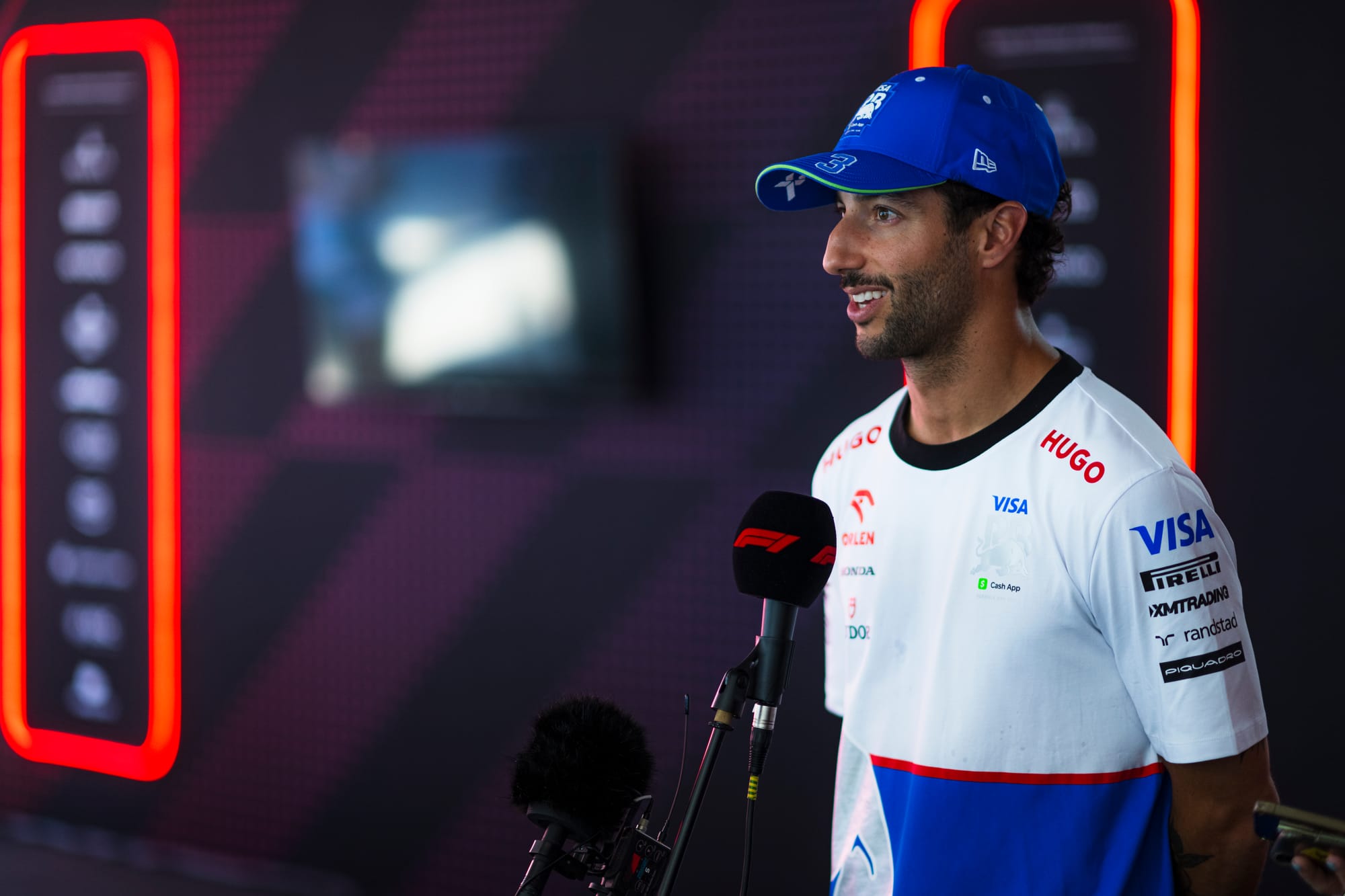
“We were all very complimentary after Montreal, because you resurfaced it but you left the kerbs. And if they put flat kerbs in Montreal, I guarantee you none of us would drive a lap there with as big of a smile as we normally would. So it really does change it.
“That was one where we honestly said ‘thank you for letting us know,' because we're all much happier now. But it still seems that a lot of slipping through the cracks without any of our opinions. We don't need an overriding say, but at least just let us give some feedback. Maybe we’ll save them money. They don't have to change the kerbs. Maybe we're a more cost-efficient solution!”
Ferrari’s Charles Leclerc echoed Ricciardo’s point about Montreal. While he accepted the need for Monza to be resurfaced, and wants to reserve judgement on the change of the driving challenge, he felt the Canadian Grand Prix venue had made a good decision.
“Ultimately, you get [to a] point [where] you’ve got to renew the Tarmac, so it’s not like there’s the choice of keeping the same Tarmac for years and years and years because at one point it just gets too bumpy, and especially with our Formula 1 cars and the way they are run so low, the track have to renew that,” said Leclerc.
“On the kerbs, it’s true that some tracks have the historic kerbs and in Canada they kept exactly the same shape, which this is nice. But I haven’t tried yet the new kerbs, so maybe they feel even better compared to the old ones. This I’ll only be able to tell you tomorrow.”
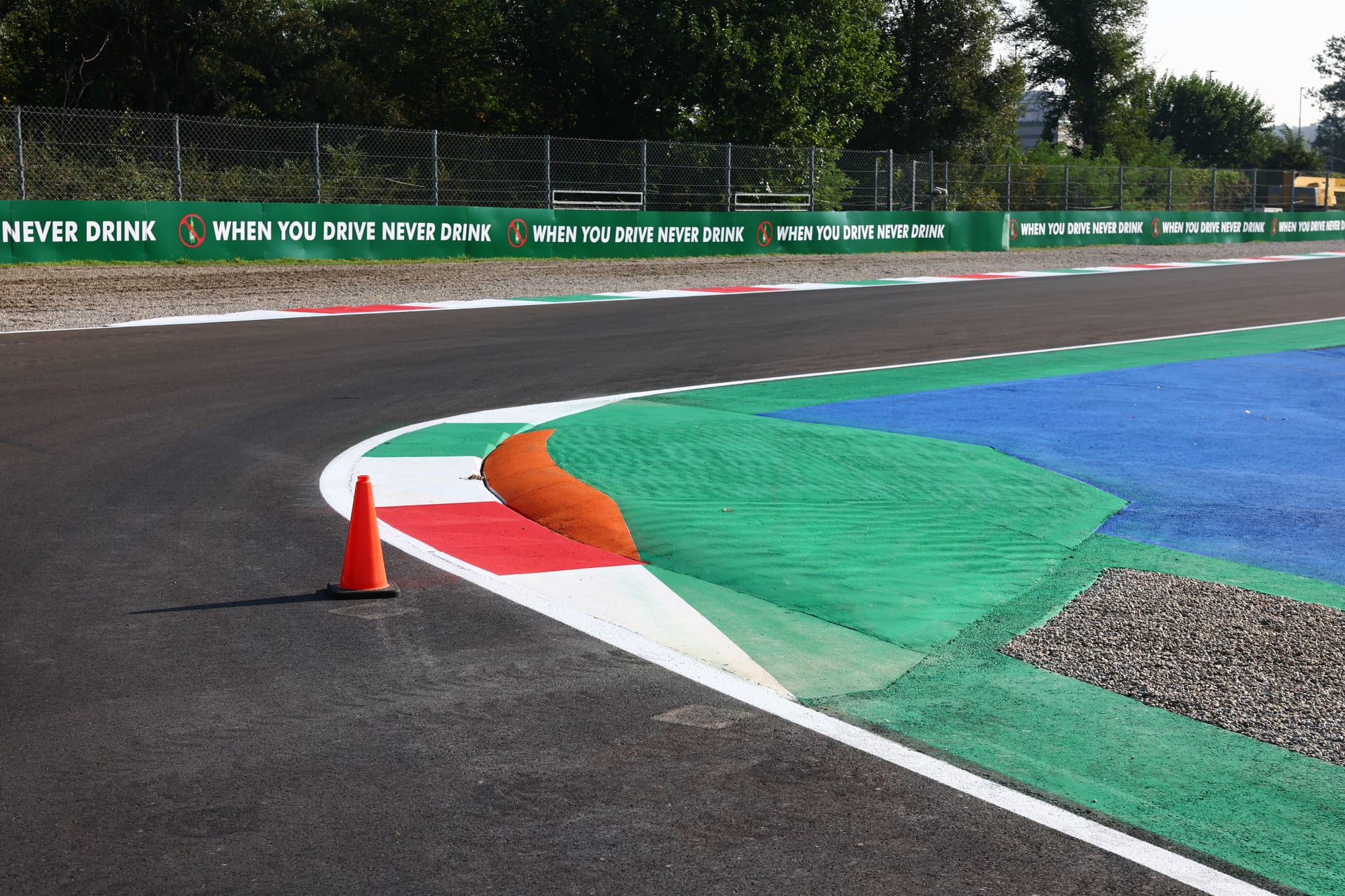
Russell expects the drivers to discuss their concerns collectively but admitted that while it does impact the driving challenge it won’t change the racing. It’s a thoroughly reasonable position, but one that gets to the heart of the matter that changes making the circuit less challenging should only be made for sound reasons such as safety.
“Definitely the drivers will speak about it,” said Russell. “If I’m being rational, it's 20 drivers who have maybe lost out on a great corner, going from great to good, but it shouldn't really change anything. It’s racing, we want the best tracks in the world to race against with the most character, but ultimately we want good racing above all else, and the change to this circuit is not really going to help or hinder the racing. It just makes it marginally less enjoyable for us drivers.
“We are quite selfish and we do want the best of everything, but hopefully we can find a better way in the future.”


